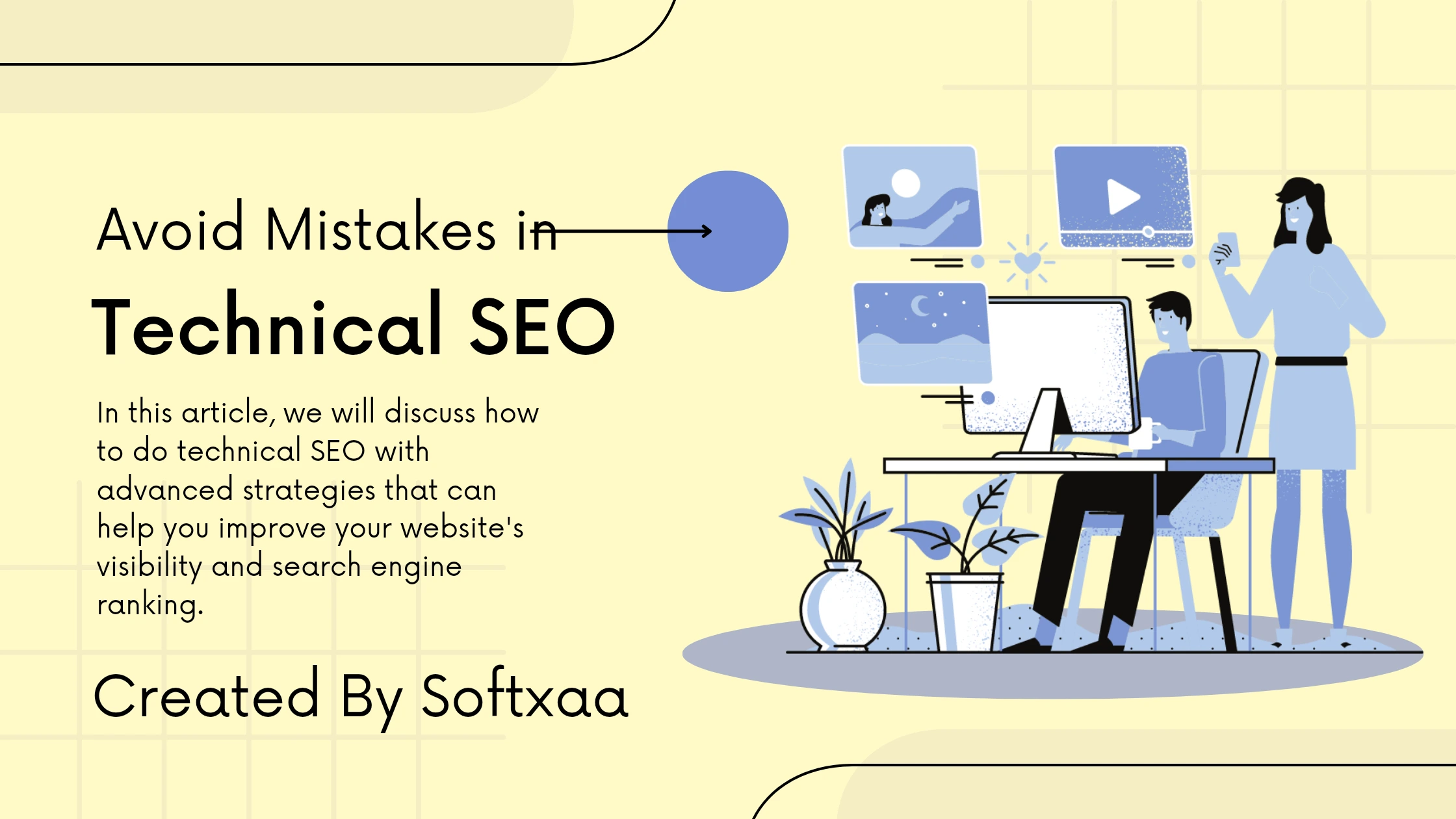Sachin Tendulkar is one of the greatest batsmen of all time, no doubt about it! But do you know that mastering technical SEO can also elevate your website to the top spot in search engine rankings? If you’re looking to enhance your website’s performance and visibility, understanding the basics of technical SEO is crucial. In this article, we’ll dive into the world of technical SEO and provide you with practical insights to optimize your website effectively.
What is Technical SEO?

Technical SEO refers to the optimization of a website’s technical elements to improve its search engine visibility. It focuses on ensuring that search engines can efficiently crawl, index, and understand the content of a website. Technical SEO involves optimizing various aspects, including website speed, mobile-friendliness, website architecture, URL structure, sitemaps, and more. By implementing technical SEO best practices, you can enhance your website’s chances of ranking higher in search engine results pages (SERPs) and driving organic traffic.
Why is Technical SEO Important?
Technical SEO plays a pivotal role in improving a website’s overall SEO performance. Here are some key reasons why technical SEO is important:
- Enhanced Website Visibility: Implementing technical SEO best practices helps search engines better understand your website’s content, resulting in improved visibility in search results. When search engines can efficiently crawl and index your site, they can rank it higher for relevant queries.
- Better User Experience: Technical SEO optimization improves the user experience by making your website faster, more accessible, and mobile-friendly. Users are more likely to stay and engage with your site when it loads quickly and functions seamlessly across different devices.
- Improved Organic Rankings: When search engines can easily crawl, index, and interpret your website’s content, it increases the likelihood of ranking higher in search results. Technical SEO optimization aligns your website with search engine guidelines, making it more attractive to search algorithms.
- Increased Organic Traffic: With higher rankings in search results, you can expect an increase in organic traffic to your website. By optimizing technical elements like website speed, URL structure, and sitemaps, you provide search engines with a clear path to your content, resulting in improved organic traffic.
- Better Conversion Rates: A well-optimized website that loads quickly and offers a seamless user experience tends to have better conversion rates. When visitors can easily navigate and find the information they need, they are more likely to convert into customers or take the desired action.
How to do Technical SEO? Technical SEO Checklist.

To maximize the impact of your SEO efforts, it’s important to dive into advanced technical SEO strategies with a technical SEO checklist. By optimizing the technical elements of your website, you’ll improve its crawlability, indexability, and overall search engine performance. Here’s a step-by-step guide on how to execute a successful technical SEO advanced strategy:
#Perform a Comprehensive Website Audit
Before diving into advanced technical SEO techniques, it’s crucial to start with a thorough website audit. This audit will help you identify any existing issues or areas for improvement. Utilize tools like Google Search Console, Screaming Frog, or SEMrush to analyze your website’s performance. Look out for common issues such as broken links, duplicate content, slow page speed, and crawl errors. Fixing these issues will lay a strong foundation for your advanced technical SEO strategy.
#Optimize Website Speed for Better Performance
Website speed is a key factor in both user experience and search engine rankings. Slow-loading websites frustrate users and lead to higher bounce rates. To optimize your website speed, consider the following strategies:
- Compress and Optimize Images: Large images can significantly slow down your website. Use image compression tools to reduce file sizes without compromising quality.
- Enable Browser Caching: Implement browser caching to store frequently accessed website data on users’ devices, reducing load times for returning visitors.
- Minify CSS and JavaScript Files: Remove unnecessary characters and spaces from your CSS and JavaScript files to reduce file sizes and improve loading speed.
- Utilize Content Delivery Networks (CDNs): CDNs distribute your website’s content across multiple servers worldwide, ensuring faster loading times for users in different regions.
#Implement Structured Data Markup for Enhanced Visibility
Structured data markup is a powerful technique that provides search engines with additional information about your website’s content. By implementing schema markup, you can enhance your website’s visibility in search engine results pages (SERPs) and enable rich snippets. Rich snippets often include ratings, reviews, and other details that can attract users’ attention and increase click-through rates. Implementing structured data markup is an advanced technical SEO strategy that can give your website a competitive edge.
#Optimize Website Architecture and Navigation
A well-structured website architecture and navigation system contribute to a positive user experience and improved search engine visibility. Follow these best practices:
- Create a Logical Hierarchy: Organize your website’s pages into a logical hierarchy with clear categories and subcategories. This helps users and search engines navigate your website more efficiently.
- Use SEO-Friendly URLs: Optimize your URLs by including relevant keywords that accurately describe the content of each page.
- Implement Breadcrumb Navigation: Breadcrumb navigation provides users with a clear path back to the homepage and helps them understand their current location within your website.
- Create an XML Sitemap: An XML sitemap provides search engines with a roadmap of your website’s pages, ensuring they are properly indexed. Generate an XML sitemap and submit it to search engines like Google and Bing to improve your website’s crawlability.
#Mobile Optimization for Improved User Experience
With the increasing use of mobile devices, optimizing your website for mobile is no longer an option but a necessity. Follow these steps to ensure your website is mobile-friendly:
- Responsive Design: Implement a responsive design that adapts to different screen sizes and resolutions, providing a seamless user experience across devices.
- Mobile-Friendly Testing: Use Google’s Mobile-Friendly Test to check if your website meets the necessary criteria for mobile optimization. Address any issues identified during the test.
- Accelerated Mobile Pages (AMP): Consider implementing AMP to create lightweight versions of your web pages that load instantly on mobile devices.
#Improve Website Security
Website security is not only important for protecting user data but also for SEO purposes. A secure website builds trust with users and search engines. Consider the following steps to improve your website’s security:
- Install an SSL Certificate: Enable HTTPS encryption to ensure secure data transmission between your website and users’ browsers.
- Regular Software Updates: Keep your website’s software, plugins, and themes updated to patch any vulnerabilities and protect against security threats.
- Strong Passwords and Two-Factor Authentication: Enforce strong passwords and enable two-factor authentication for admin accounts to prevent unauthorized access.
- Website Firewall: Implement a website firewall to monitor and block suspicious activities, protecting your website from hacking attempts.
Here’s: How to Install SSL Certificate.
#Optimize the Website for Voice Search
As voice assistants like Siri and Alexa gain popularity, optimizing your website for voice search queries becomes essential. Here’s how to do it:
- Natural Language and Long-Tail Keywords: Optimize your content using conversational language and incorporate long-tail keywords that match voice search queries.
- FAQ Content: Create concise and direct answers to common questions related to your industry, as voice searches often seek immediate answers.
- Fast Loading Speed: Voice search users expect quick results, so optimize your website’s loading speed to provide a seamless experience.
- Local SEO: Focus on local SEO strategies to capture voice search queries with local intent.
#Implement Accelerated Mobile Pages (AMP)
AMP, or Accelerated Mobile Pages, is an open-source framework that allows for faster loading times on mobile devices. Consider the following steps to leverage AMP:
- Identify Critical Content: Prioritize AMP implementation for your most important pages, such as landing pages or product/service descriptions.
- Follow AMP Guidelines: Adhere to Google’s guidelines for creating AMP versions of your web pages, ensuring compatibility and optimal performance.
- Monitor and Adjust: Continuously monitor the performance of your AMP pages and make necessary adjustments to improve user experience.
#Optimize Website Structure for Search Engine Crawlers
Search engine crawlers play a crucial role in indexing and ranking your website. By optimizing your website’s structure, you can ensure that crawlers can easily navigate and understand your content. Consider the following techniques:
- XML Sitemaps: Utilize XML sitemaps to provide a clear roadmap of your website’s pages to search engine crawlers, helping them discover and index your content more effectively.
- Robots.txt File: Implement a robots.txt file to instruct crawlers on which pages to crawl and which to exclude, ensuring they focus on your most valuable content.
- Internal Linking: Use internal linking to connect relevant pages within your website, helping crawlers discover new content and establish relationships between pages.
#Monitor and Analyze Your Website’s Performance
Regularly monitoring and analyzing your website’s performance is crucial for identifying areas that need improvement and measuring the effectiveness of your advanced technical SEO strategy. Consider the following metrics and tools:
- Website Traffic: Monitor organic traffic trends, page views, bounce rates, and time on site using tools like Google Analytics.
- Page Speed: Continuously assess your website’s page speed using tools like Google PageSpeed Insights and make necessary optimizations.
- Keyword Rankings: Keep track of your keyword rankings in search engine results to evaluate the impact of your SEO efforts.
- Crawl Errors: Regularly check for crawl errors and fix them promptly to ensure search engine crawlers can access and index your content.
Common Mistakes in Technical SEO

While implementing technical SEO, it’s important to avoid common mistakes that can hinder your website’s performance. Let’s explore some of these mistakes and how to avoid them:
#Ignoring Website Speed Optimization
Page loading speed is a crucial factor in both user experience and search engine rankings. Ignoring website speed optimization can lead to high bounce rates and lower search rankings. Make sure to optimize image sizes, minify CSS and JavaScript files, enable caching, and leverage content delivery networks (CDNs) to improve website speed.
#Neglecting Mobile-Friendliness
With the increasing use of mobile devices, having a mobile-friendly website is essential. Neglecting mobile-friendliness can result in a poor user experience and lower search rankings. Ensure your website is responsive, uses mobile-friendly design principles, and performs well across different screen sizes.
#Poor URL Structure
A clear and logical URL structure helps search engines understand your website’s hierarchy and improves user experience. Avoid using complex or irrelevant URLs that don’t provide meaningful information. Instead, use descriptive and keyword-rich URLs that accurately reflect the content on the page.
#Lack of XML Sitemaps
XML sitemaps help search engines understand the structure and content of your website. Neglecting to create and submit XML sitemaps can result in incomplete indexing of your website’s pages. Ensure that you generate XML sitemaps and submit them to search engines to help them crawl and index your website effectively.
#Thin or Duplicate Content
Having thin or duplicate content can negatively impact your website’s SEO performance. Thin content refers to pages with minimal or low-quality content, while duplicate content refers to identical or highly similar content across multiple pages. Ensure that each page on your website offers valuable and unique content to provide a better user experience and avoid potential penalties from search engines.
#Improper Use of Heading Tags
Heading tags (H1, H2, H3, etc.) play a crucial role in structuring your content and signaling its relevance to search engines. Using heading tags improperly or not using them at all can confuse search engines and impact your SEO. Make sure to use heading tags to organize your content hierarchy and include relevant keywords where appropriate.
Conclusion
Technical SEO is a critical aspect of optimizing your website for search engines and improving its performance. By following the advanced strategies outlined in this guide, you can ensure that your website is well-optimized, user-friendly, and search engine-friendly. Remember to conduct regular audits, monitor performance, and adapt to evolving trends and technologies to stay ahead of the competition. By investing time and effort in technical SEO, you can boost your website’s visibility, attract organic traffic, and ultimately achieve your online goals.
Frequently Asked Questions (FAQs)
We hope you already understand how to do technical SEO. Let’s explore a few frequently asked questions.
What is the importance of technical SEO for a website?
Technical SEO plays a crucial role in ensuring that search engines can properly crawl, index, and rank your website. By optimizing technical aspects such as website speed, mobile-friendliness, and structured data markup, you can enhance user experience, increase organic traffic, and improve your website’s visibility in search engine rankings.
How often should I conduct a website audit for technical SEO?
It is recommended to conduct a website audit for technical SEO at least once every quarter. This ensures that any issues or errors are promptly identified and resolved, leading to better website performance and improved search engine rankings.
Can I implement advanced technical SEO strategies without technical expertise?
While having technical expertise can certainly be beneficial, it is not a prerequisite for implementing advanced technical SEO strategies. Many online resources, tutorials, and tools are available to guide you through the process. However, if you’re uncertain, it is advisable to consult with a professional or an SEO agency to ensure proper implementation.
Is mobile optimization important for technical SEO?
Yes, mobile optimization is crucial for technical SEO. With the increasing use of mobile devices, search engines prioritize mobile-friendly websites in their rankings. Optimizing your website for mobile users improves user experience, reduces bounce rates, and increases the likelihood of higher conversions. It is essential to ensure responsive design, fast loading times, and easy navigation on mobile devices to succeed in today’s mobile-centric digital landscape.
What are rich snippets, and how do they impact search engine visibility?
Rich snippets are enhanced search results that display additional information alongside the traditional title and meta description. They often include ratings, reviews, prices, and other relevant details, providing users with more context and increasing their click-through rates. Implementing structured data markup, such as schema.org, can help search engines understand and display rich snippets, which can significantly enhance your website’s visibility in search engine results.
Can implementing AMP (Accelerated Mobile Pages) benefit my website’s performance?
Yes, implementing AMP can greatly benefit your website’s mobile performance. AMP allows for faster loading times, reducing bounce rates and improving user experience on mobile devices. It is particularly effective for content-heavy websites, news publishers, and blogs. By implementing AMP for your critical content, you can provide a seamless and lightning-fast mobile experience, leading to higher engagement and better search engine rankings.

